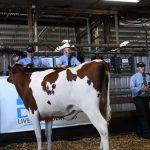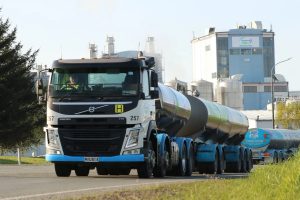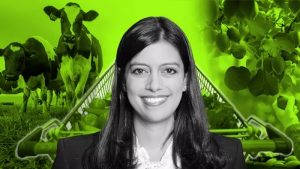
Experts from the New Zealand food and beverage industry and academia have expressed mixed reactions to Fonterra’s recently-announced Climate Roadmap, simultaneously urging for farmer-level collaboration to be prioritised over novel tech.
New Zealand dairy giant Fonterra recently announced its new Climate Roadmap targeting an overall ‘30% intensity reduction in on-farm emissions’ by 2030 from a 2018 baseline.
According to Fonterra CEO Miles Hurrell, this strategy is a response to public demands for increasing sustainability demonstration in the dairy industry.
“As a dairy partner to many of the world’s leading food companies, we’re responding to growing sustainability ambitions from our customers and financial institutions, along with increasing market access, legal and reporting obligations,” he told us.
“Our collective efforts to reduce emissions – from on farm, across our operations and by our R&D teams – will help future proof Fonterra.
“We expect this new target will be achieved through a number of ways, including 7% reduction through farming best practices, 7% reduction through novel technologies that we’re developing [together with government] and other partnerships; 8% reduction through carbon removals from vegetation and 8% from historical land-use change conversions to dairy.”
Industry players have largely shown a positive response to the Climate Roadmap, such as local food and beverage heavyweight Nestle New Zealand.
“Nestlé has sourced dairy from New Zealand for well over a hundred years, we will continue supporting farmers alongside our partners to develop new economic opportunities and reduce their greenhouse gas emissions,” Nestle New Zealand CEO Jennifer Chappell told us.
“This move by Fonterra will encourage even greater action by farmers, researchers and policy makers in support of a just transition for the dairy industry.
“Nestle [will also play our part by] prioritising our sourcing from farmers engaged in lowering emissions, by providing technical support, and by paying a premium for their products.”
Nestle and Fonterra are currently involved in a number of sustainability-focused initiatives including crop nutrient management to reduce greenhouse gas emissions, the development of profitable net zero emission farming, planting one million native plants on farms to sequester carbon and more.
“Dairy is our single biggest source of greenhouse gas emissions, hence we must work with dairy farmers and their communities towards our goal while supporting a just transition,” she stressed.
Efficiency doubts
On the other side of the coin though, doubts have emerged with regard to the roadmap’s efficiency in cutting down carbon emissions by quantity, spurred largely by the firm’s choice to target ‘intensity reduction’ as opposed to ‘absolute reduction’.
‘Intensity reduction’ targets measure emissions in relation to a certain physical or economic metric – in this case, Fonterra is looking to reduce its emissions intensity by tonne of the FPCM (fat and protein corrected milk) it collects.
These are widely considered to be more flexible than the ‘absolute reduction’ targets recommended by the United Nations which measure emissions reduction by a set amount within a specified timeframe – this is because there are many types of business operational changes that could affect the eventual number from mergers to sales growth and so on.
“One of the significant issues with the targets that Fonterra has set is that they have chosen to adopt intensity targets rather than absolute targets [as] there is the chance that Fonterra would increase these emissions overall while being emission efficient in relation to the intensity measure,” Otago Climate Change Research Network Co-Director Professor Sara Walton said via a formal statement.
“It is good to hear that Fonterra has released a roadmap for their transition and re-assessed its emission targets, [but results and claims such as] being ‘one of the most emissions efficient suppliers of dairy at scale’ will need to be evidence-based to avoid the risk associated with greenwashing.”
University of Otago Agricultural Innovation Programme Director Professor Craig Bunt voiced concerns over the firm’s focus on novel technologies, calling for more collaboration with farmers actually working in the sector to be prioritised instead.
“Fonterra’s climate plans [are] a commendable step toward addressing environmental concerns in New Zealand’s agricultural sector, [but] it raises questions about the apparent reliance on technologies that have yet to be proven in the agricultural system,” he said.
“A significant portion (7%) of this goal has been allocated to novel technologies [and] the agricultural sector’s complexity [challenges] the one-size-fits-all approach implied by the reliance on these technologies.
“Fonterra must ensure that it works closely with farmers to develop and implement these technologies successfully, recognizing the uniqueness of each farming system – [This] cooperative approach [will] be essential to achieving the targets while minimising potential disruptions and challenges that farmers may face.”






















